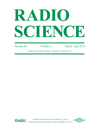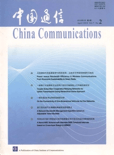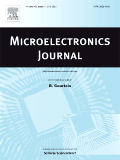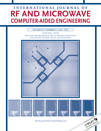
RADIO SCIENCE
Scope & Guideline
Connecting Scholars in Electromagnetic Research
Introduction
Aims and Scopes
- Electromagnetic Theory and Applications:
Research in this area explores the fundamental principles of electromagnetic theory and its applications in various technologies, including antennas, waveguides, and other components crucial for radio communications. - Signal Integrity and Electromagnetic Interference (EMI):
This scope addresses challenges in signal integrity, particularly in PCB designs and systems, focusing on the effects of EMI and strategies for mitigation, including innovative computational techniques and machine learning approaches. - Microwave and Millimeter Wave Technologies:
The journal covers advancements in microwave and millimeter wave technologies, including the design and implementation of filters, antennas, and other devices, as well as their applications in communications and radar systems. - Radio Wave Propagation and Scattering:
Research includes the study of radio wave propagation characteristics in various environments, including urban and natural settings, as well as the impact of surface materials on scattering properties. - Innovative Measurement Techniques and Technology Development:
This area focuses on the development and application of novel measurement techniques, such as synthetic aperture radar and reflectarray antennas, to enhance the accuracy and efficiency of electromagnetic field measurements. - Emerging Technologies in Communication Systems:
The journal also emphasizes the exploration of new communication technologies, including the integration of AI and machine learning in signal processing and system optimization.
Trending and Emerging
- Artificial Intelligence and Machine Learning in Signal Processing:
The integration of AI and machine learning techniques for enhancing signal integrity, optimizing PCB designs, and improving measurement techniques is a rapidly growing theme, showcasing the potential for these technologies to revolutionize radio science. - Advanced Antenna Technologies:
There is an increasing focus on the development of advanced antenna systems, including MIMO configurations and tunable antennas for next-generation communication systems, particularly in the context of 5G and beyond. - Sustainability and Environmental Impact of Radio Technologies:
Research exploring the environmental impact of radio technologies, such as the effects of electromagnetic exposure and mitigation strategies, is becoming more prominent as awareness of sustainability issues in technology grows. - Smart Grid and Cybersecurity Challenges:
With the rise of smart grid technologies, research addressing the vulnerabilities of these systems to electromagnetic interference and cybersecurity threats is gaining importance, reflecting the need for robust protection mechanisms. - Innovative Measurement and Testing Techniques:
The development of new measurement techniques, such as those utilizing synthetic aperture radar and advanced signal processing algorithms, is trending, enhancing the capabilities of existing technologies and applications.
Declining or Waning
- Historical Perspectives in Radio Science:
While historical analyses of radio technology have been valuable, there has been a noticeable decline in publications focusing solely on historical perspectives, such as the centenary of wireless telephony, as the journal shifts towards contemporary applications and technological advancements. - Basic Theoretical Studies:
Research that is primarily theoretical, without a strong emphasis on practical application or technological relevance, appears to be waning. There is a growing preference for studies that combine theory with practical implications, particularly in the context of modern technology. - Low-Frequency Applications:
There has been a reduction in research focused on low-frequency applications as the journal increasingly prioritizes high-frequency and microwave technologies, which are more relevant to current communication systems.
Similar Journals

Journal of Magnetics
Connecting Disciplines Through Magnetic DiscoveriesJournal of Magnetics, published by the Korean Magnetics Society, is an essential resource dedicated to advancing the knowledge and understanding of magnetics across the disciplines of Condensed Matter Physics, Electrical and Electronic Engineering, and Electronic, Optical and Magnetic Materials. With a focus on innovative research and development from 2008 to 2024, this journal serves as a platform for sharing cutting-edge findings and theoretical advancements in the field. Although it currently holds a Q4 ranking in established categories, it is an emerging publication that invites researchers, professionals, and students alike to contribute to and engage with its scientific discourse. Notably, it embraces a community of scholars aiming to bridge the gap between theory and practical applications in magnetics, despite its current Scopus rankings reflecting deeper industry competition. Based in South Korea, the journal operates from its office at Korea Sciences & Technology Center, RM 905, Yeoksam-dong 635-4, Kangnam-ku, Seoul 135-703, South Korea. While it does not provide open access, its commitment to academic rigor promises to elevate its stature in subsequent years, making it a vital publication for those keen on exploring the frontiers of magnetics.

Physics of Wave Phenomena
Unraveling the Mysteries of Wave InteractionsPhysics of Wave Phenomena is an esteemed journal published by PLEIADES PUBLISHING INC, dedicated to advancing the understanding and research of wave-related phenomena across various physical contexts. Established in 2009, it has forged a reputation within the realm of Physics and Astronomy, most recently ranking in the Q3 category according to Scimago's metrics, reflecting its commitment to quality and relevance within the global scientific community. The journal's systematic exploration of wave dynamics, propagation, and interactions provides a vital platform for scholars, mathematicians, and practitioners seeking to disseminate their findings and engage with cutting-edge advancements in the field. With an evolving scope that embraces both theoretical and experimental studies, Physics of Wave Phenomena effectively serves as an essential resource for knowledge exchange, ensuring accessibility to the latest research trends, despite not currently adopting an open-access model. Indispensable to researchers and students alike, this journal plays a pivotal role in enriching the academic discourse within physics and related interdisciplinary fields.

China Communications
Illuminating the Path of Telecommunications ExcellenceChina Communications is a prestigious peer-reviewed journal published by the China Institute of Communications, dedicated to advancing the field of telecommunications and information technology. With an impressive Q1 ranking in both Computer Networks and Communications and Electrical and Electronic Engineering, this journal stands out as a leading source of cutting-edge research and innovative solutions in the engineering domain. The journal aims to provide a platform for scholars and practitioners to share their findings on the latest trends, technologies, and methodologies impacting the communications landscape in China and beyond. It is particularly noted for its high visibility in the academic community, as demonstrated by its Scopus rankings, which place it in the top percentiles for both fields. Through its commitment to quality content, China Communications contributes significantly to the advancement of knowledge, making it an invaluable resource for researchers, professionals, and students alike.

Progress in Electromagnetics Research M
Empowering Research in Condensed Matter and BeyondProgress in Electromagnetics Research M is a prominent journal published by ELECTROMAGNETICS ACADEMY, dedicated to advancing the field of electromagnetics through innovative research, theoretical exploration, and practical applications. With a focus on condensed matter physics and electronic, optical, and magnetic materials, this journal serves as a vital platform for scholars and practitioners seeking to disseminate new findings and methodologies. While it currently holds a Q3 ranking in both aforementioned fields, it offers a valuable contribution to the understanding and development of contemporary technologies. The journal's ISSN is N/A, but its E-ISSN is 1937-8726, ensuring that research is accessible to a global audience. Progress in Electromagnetics Research M aims to foster collaboration and knowledge sharing among researchers, making it an essential resource for anyone interested in the dynamic and evolving area of electromagnetics.

JOURNAL OF COMMUNICATIONS TECHNOLOGY AND ELECTRONICS
Exploring Innovations in Technology and Materials Science.JOURNAL OF COMMUNICATIONS TECHNOLOGY AND ELECTRONICS, published by PLEIADES PUBLISHING INC, is a prominent academic journal dedicated to advancing the fields of communications technology, electronics, and materials science. With an ISSN of 1064-2269 and an E-ISSN of 1555-6557, this journal has been a pivotal resource since its inception in 1995, providing a platform for researchers and professionals to disseminate and explore groundbreaking studies and innovations up to the year 2024. Although currently categorized in Quartile 4 for Condensed Matter Physics and Quartile 3 for Electrical and Electronic Engineering, it continues to thrive in its role, offering insights and findings that contribute to its evolving impact within these disciplines. Researchers will find valuable content that emphasizes critical advancements in technology and materials, supported by robust Scopus rankings that highlight its competitive standing within its category. With no open access option, the journal provides exclusive access to its subscribers to delve into high-quality peer-reviewed articles, making it an essential resource for those at the forefront of scientific inquiry and innovation.

MICROELECTRONICS JOURNAL
Pioneering Discoveries in Microelectronics and BeyondMICROELECTRONICS JOURNAL, published by Elsevier Sci Ltd since 1974, serves as a pivotal platform for disseminating cutting-edge research in the realms of microelectronics, nanotechnology, and materials science. With editions spanning from 1974 to 2024, the journal is well-respected within the scientific community, boasting a strong presence in key categories such as Atomic and Molecular Physics, Condensed Matter Physics, and Electrical and Electronic Engineering, as evidenced by its Q3 ranking in 2023. Researchers and professionals engaged in the exploration of electronic materials, optical applications, and nanoscale innovations can greatly benefit from the journal's insights, which situate their work within a robust academic framework. Although the journal does not currently offer open access, its rigorous peer-review process and high visibility in Scopus rankings—including a percentile ranking of 58th in Condensed Matter Physics—make it an essential resource for anyone looking to stay at the forefront of advancements in microelectronics and related fields.

INTERNATIONAL JOURNAL OF RF AND MICROWAVE COMPUTER-AIDED ENGINEERING
Innovating Computer-Aided Design for Tomorrow's TechnologiesInternational Journal of RF and Microwave Computer-Aided Engineering, published by Wiley, is a leading peer-reviewed journal dedicated to advancing research in the realms of radio frequency, microwave engineering, and computer-aided design. With an ISSN of 1096-4290 and an E-ISSN of 1099-047X, this journal plays a pivotal role in the dissemination of innovative methodologies and state-of-the-art developments within these dynamic fields. Recognized within the Q3 category across three engineering and computer science domains as of 2023, it garners attention for its substantial contributions, ranking 40th among 106 in Computer Graphics and Computer-Aided Design and 327th among 797 in Electrical and Electronic Engineering according to Scopus metrics. Emphasizing its commitment to knowledge sharing, the journal provides a range of access options, including Open Access, to ensure the research is readily available to a global audience. Covering years from 1996 to 2024, the International Journal of RF and Microwave Computer-Aided Engineering continues to be an indispensable resource for researchers, professionals, and students in pursuit of excellence in engineering and applied sciences.

Progress in Electromagnetics Research-PIER
Leading the Charge in Electromagnetics ExcellenceProgress in Electromagnetics Research-PIER, published by EMW PUBLISHING, is an esteemed academic journal that stands at the forefront of the fields of Condensed Matter Physics, Electrical and Electronic Engineering, and Radiation. With an impressive impact factor reflected in its Q1 quartile rankings across these disciplines, PIER serves as a critical platform for disseminating high-quality research findings and advancements from 2000 onwards, with the latest contributions expected through 2024. The journal's commitment to excellence is evident as it holds prominent positions in Scopus rankings, including a remarkable 95th percentile in the field of Radiation. Researchers, professionals, and students will find PIER invaluable for accessing cutting-edge topics and methodologies that push the boundaries of electromagnetics research. For facile access, the journal is published in both ISSN (1070-4698) and E-ISSN (1559-8985) formats, ensuring that vital knowledge is readily available to its audience.

Przeglad Elektrotechniczny
Empowering Innovation in Electrical EngineeringPrzeglad Elektrotechniczny, published by WYDAWNICTWO SIGMA-NOT SP ZOO, is a prominent journal in the field of Electrical and Electronic Engineering, with its ISSN being 0033-2097 and E-ISSN 2449-9544. Established in Poland and in circulation since 1969, this journal has served as a vital platform for disseminating research findings, theoretical advancements, and innovative practices in electrical engineering. With an HIndex that reflects its scholarly impact, it currently holds a Q4 ranking within its category and a notable position on Scopus, ranking #644 out of 797 in Electrical and Electronic Engineering, which places it in the 19th percentile. Although it does not offer open access, the journal persists in fostering academic discourse and providing a repository of knowledge with publication timelines extending from 1969 to 1984 and then continuing from 2005 to 2024. As it seeks to bridge the gap between theory and practice, Przeglad Elektrotechniczny is essential for researchers, professionals, and students striving for excellence in this dynamic and ever-evolving field.

Radiophysics and Quantum Electronics
Elevating Standards in Radiophysics ResearchRadiophysics and Quantum Electronics is a leading scholarly journal published by SPRINGER, dedicated to advancing knowledge in the fields of radiophysics and quantum electronics. With a rich publication history dating back to 1967 and covering anticipated insights up to 2024, the journal serves as a crucial resource for researchers engaged in the exploration of areas such as Astronomy and Astrophysics, Electrical and Electronic Engineering, and Nuclear and High Energy Physics. Although it is classified in lower quartiles in several categories, its ongoing commitment to quality research and critical advancements adds invaluable knowledge to the scientific community. The journal does not currently offer open access options, allowing for traditional publication standards that uphold rigor and academic integrity. Researchers, professionals, and students alike can benefit from the comprehensive articles and studies published within its pages, making Radiophysics and Quantum Electronics an essential addition to any academic library focused on the nuances of modern physics and engineering.